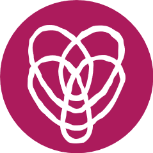The practice of holistic nursing requires nurses to integrate self-care, self-responsibility, spirituality, and reflection in their lives. This may lead the nurse to greater awareness of the interconnectedness with self, others, nature, and spirit. This awareness may further enhance the nurse’s understanding of all individuals and their relationships to the human and global community. It also permits nurses to use this awareness to facilitate the healing process.
To help with this, there are stress-reducing activities that you can use for yourself or your clients: http://www.ahna.org/Portals/4/docs/Resources/Stress/HolisticStressManagementNurses.pdf
Here are some additional suggestions for practice:
- Remove your shoes and wear loose clothing.
- Avoid eating, smoking, or drinking. It’s best to practice before meals rather than after, for the sake of your digestive processes.
- Never practice after using any intoxicants.
- Sit in a comfortable chair if possible. You may practice lying down, but this increases the likelihood of falling asleep.
- If you practice in bed at night, plan on falling asleep before you complete your cycle. Therefore, consider a practice session at night, in bed, to be in addition to your basic practice.
- When you finish a session, relax with your eyes closed for a few seconds, and then get up slowly. (Orthostatic hypotension—a sudden drop in blood pressure due to standing up quickly—can cause you to faint.) Some people like to count backwards from 5 to 1, timed to slow, deep breathing, and then say, “Eyes open. Supremely calm. Fully alert.”
Tension–Relaxation Procedure
Step One: Tension.
The process of applying tension to a muscle is essentially the same, regardless of which muscle group you are using.
First, focus your mind on the muscle group; for example, your right hand. Then inhale and simply squeeze the muscles as hard as you can for about 8 seconds. Per example, this would involve making a tight fist with your hand.
Note: Beginners usually make the mistake of allowing muscles other than the intended group to tense as well; in the example, this would be tensing muscles in your right arm and shoulder, not just in your right hand. With practice you will learn to make very fine discriminations among muscles, but for the moment just do the best you can. It can be very frustrating for a beginner to try to experience a fine degree of muscle separation.
It’s important to really feel the tension. Done properly, the tension procedure will cause the muscles to start to shake, and you will feel some slight discomfort. Be careful not to hurt yourself, as compared to feeling mild pain. Contracting the muscles in your feet and your back, especially, can cause serious problems if not done carefully; i.e., gently but deliberately.
Step Two: Releasing the Tension.
This is the best part, because it is actually pleasurable. After the 8 seconds, quickly and suddenly let go. Let all the tightness and pain flow out of the muscles as you simultaneously exhale. In the example, this would be imagining tightness and pain flowing out of your hand through your fingertips as you exhale. Feel the muscles relax and become loose and limp, tension
flowing away like water out of a faucet. Focus on and notice the difference between tension and relaxation.
Note: The point here is to really focus on the change that occurs as the tension is let go. Do this very deliberately, because you are trying to learn some very subtle distinctions between muscular tension and muscular relaxation.
Stay relaxed for about 15 seconds, and then repeat the tension-relaxation cycle. You’ll probably notice more sensations the second time.
Muscle Groups
You will make a systematic progression from your feet upwards.
Note: If you are left-handed, you might want to begin with your left foot, and so on.
Once you understand the muscle groups and the tension-relaxation procedure, then you are ready to begin the PMR training. Simply follow the list of muscle groups in the sequence given and work through your entire body. Practice twice a day

Leave a Reply